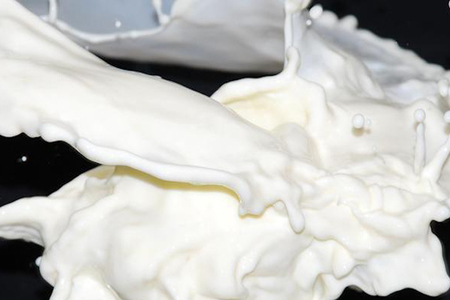Hits: 112 img

During fermentation, microbial metabolic activity generates large amounts of gas (e.g., carbon dioxide), while proteins, polysaccharides, and other substances in the fermentation broth form stable foam layers. Excessive foam can lead to several problems:
Reduced Production Efficiency: Foam occupies the effective volume of the fermenter, decreasing the actual working volume and affecting yield.
Increased Contamination Risk: Foam overflow can contaminate the fermentation system, leading to microbial contamination and reduced product purity.
Impaired Oxygen Transfer: Foam layers hinder oxygen diffusion into the broth, affecting the growth and metabolism of aerobic microorganisms.
Operational Challenges: Foam can interfere with sensors, clog valves, and even damage equipment.
Therefore, foam control is essential in the fermentation industry, and defoamers serve as the most direct and efficient solution.
Defoamers work by destabilizing foam. The stability of foam relies on the elastic film formed by surfactant molecules at the gas-liquid interface. Defoamers act through the following mechanisms:
Reducing Surface Tension: Defoamers rapidly spread across the foam surface, lowering local surface tension and causing foam collapse.
Disrupting Liquid Film Structure: Defoamer molecules penetrate the foam film, destabilizing it and promoting coalescence or rupture.
Inhibiting Foam Regeneration: Some defoamers form hydrophobic layers in the broth, reducing new foam formation.
Based on chemical composition, defoamers can be classified into the following categories:
Silicone defoamers (e.g., polydimethylsiloxane) are highly efficient, chemically inert, and heat-resistant, making them widely used in antibiotic and vitamin fermentation. Their advantages include rapid action and low dosage, but excessive use may affect downstream extraction processes.
Polyether defoamers (e.g., GP-type, GPE-type) offer excellent dispersibility and foam suppression, making them suitable for high-viscosity fermentation systems such as yeast cultivation and enzyme production. They are stable under varying pH and temperature conditions.
Natural oils like soybean oil and corn oil were traditionally used in fermentation (e.g., soy sauce and alcoholic beverages). However, due to their tendency to oxidize, they are gradually being replaced by synthetic defoamers.
Combining the advantages of silicone and polyether defoamers, composite defoamers are suitable for specialized fermentation systems, such as high-solid-content or extreme-pH conditions.
In penicillin and streptomycin fermentation, microbial metabolism generates significant foam. Silicone defoamers are preferred for their high efficiency, improving oxygen transfer and increasing yield.
During beer fermentation, yeast metabolism produces large amounts of CO₂, leading to foam formation. Food-grade polyether defoamers are widely used to stabilize fermentation without affecting flavor.
In the fermentation of enzymes like amylase and protease, foam can hinder microbial growth and enzyme activity. Composite defoamers provide precise foam control, enhancing enzyme yield.
Processes such as glutamic acid and citric acid fermentation require strict foam control to prevent contamination and metabolic inhibition. Polyether defoamers are ideal due to their biocompatibility.
As the fermentation industry moves toward higher efficiency and sustainability, defoamer development is also evolving:
Biodegradable Defoamers: Reducing environmental impact in line with sustainable practices.
Smart Foam Control: Real-time foam monitoring via sensors and automated defoamer dosing for precision.
Nano Defoamers: Utilizing nanomaterials to enhance efficiency and reduce dosage.
Defoamers play a vital role in the fermentation industry, improving production efficiency and ensuring product quality. With technological advancements, future defoamers will become more efficient and eco-friendly, supporting the sustainable development of the fermentation industry.